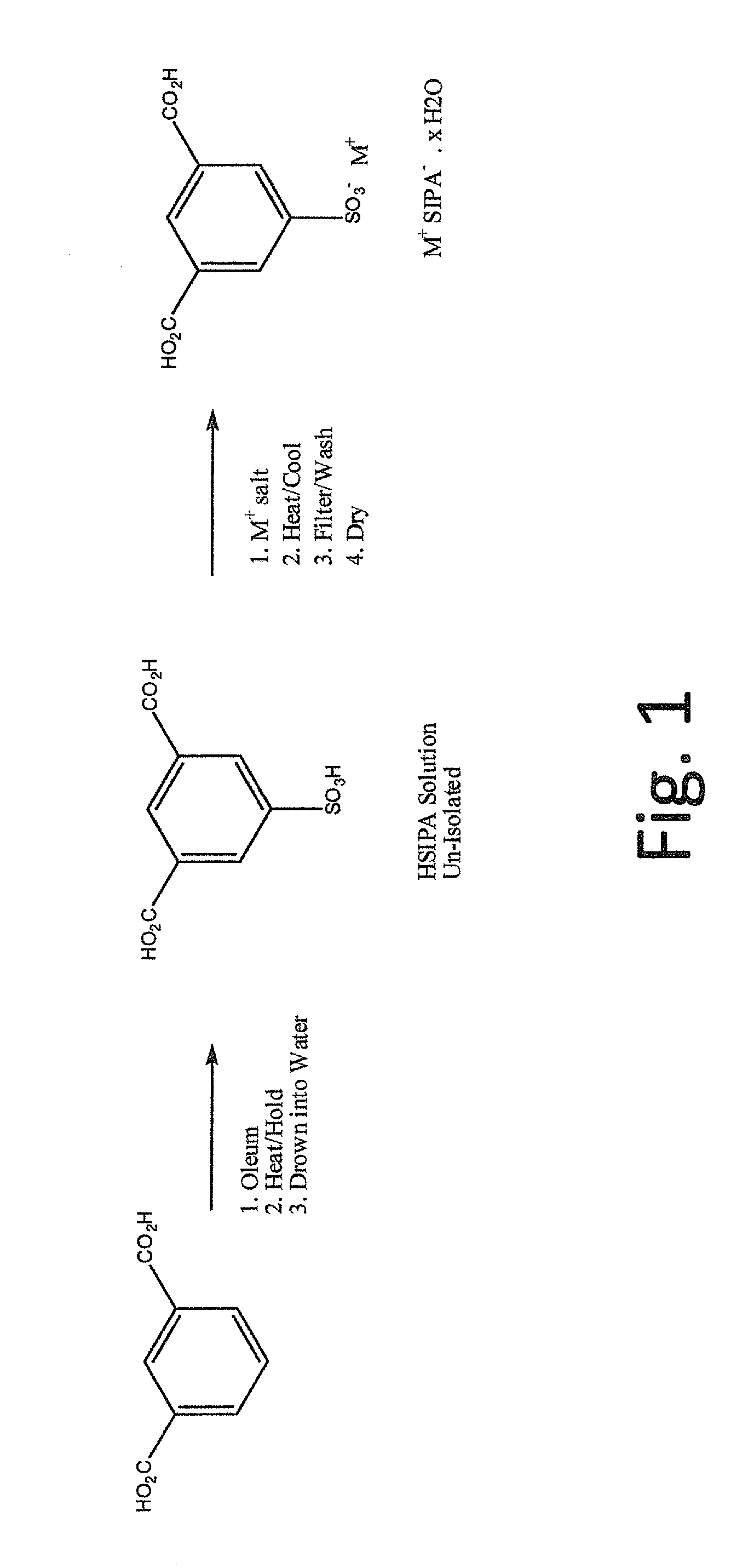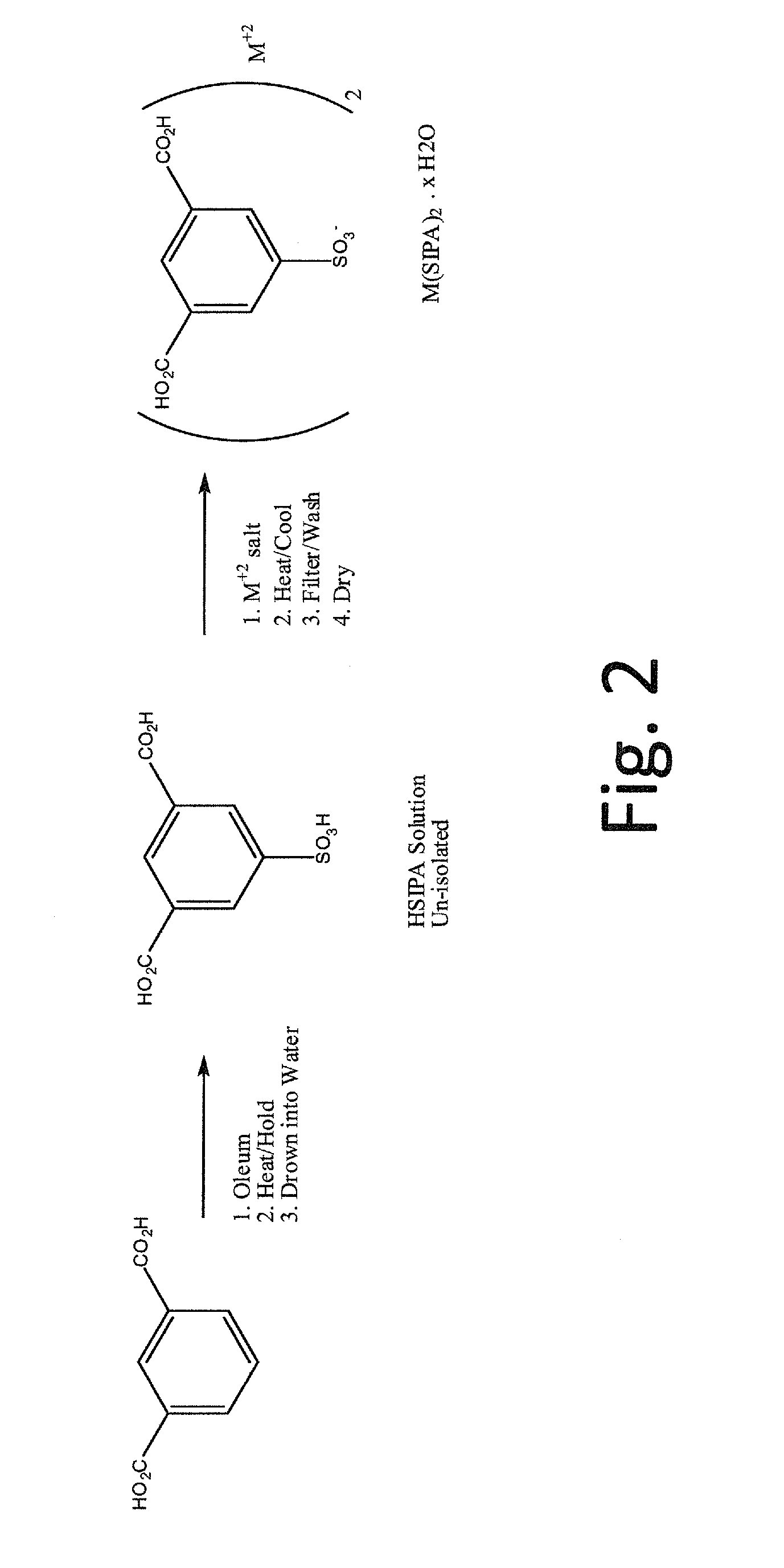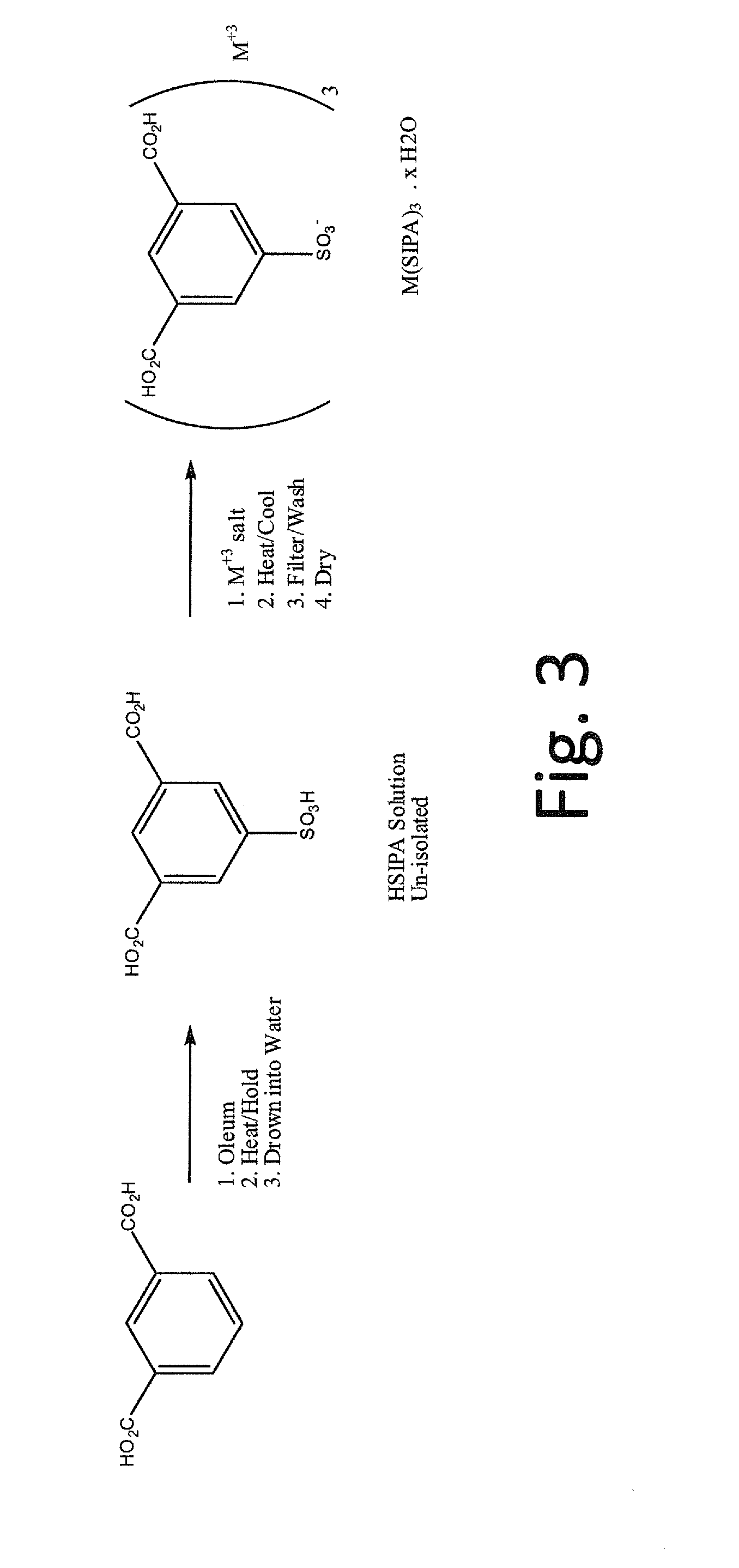5-sulfoisophthalic acid salts and process for the preparation thereof
a technology of isophthalic acid and salts, which is applied in the direction of chemistry apparatus and processes, organic chemistry, group 3/13 element organic compounds, etc., can solve the problems of poor lightfastness, under-utilization of cationic dyeable nylon as a carpet fiber, and variability in hsipa chemistry
- Summary
- Abstract
- Description
- Claims
- Application Information
AI Technical Summary
Benefits of technology
Problems solved by technology
Method used
Image
Examples
example 1
[0046]The process according to the invention was utilized to make the potassium salt of 5-sulfoisophthalic acid (NaSIPA).
[0047]To a 1000 mL round-bottom flask is added 575 grams of an aqueous HSIPA solution (approximately 28.5% HSIPA and 30% sulfuric acid). Solid KOH (potassium hydroxide, 37.3 grams) was added slowly and the mixture was heated to reflux at about 100 to 120° C. The resulting solution was cooled to crystallize (crystallization occurred at around 84° C.). Four drops of 35% hydrogen peroxide were added and the batch was cooled to 25° C., filtered on a sintered glass funnel and washed twice with glacial acetic acid (70 grams for each wash). The product was dried in a 100° C. vacuum oven to give 143 grams of white solid. The product assayed as follows:
[0048]
Weight, grams143Sulfate, % as SO40.10Acetate, % as OAc0.37Acidity, % as H2SO40.14Water, % KF0.35SIPA Moiety, LCConfirmedK, x-ray fluorescenceConfirmed
example 2
[0049]The process according to the invention was used to make the rubidium salt of 5-sulfoisophthalic acid (RbSIPA).
[0050]To a 1000 mL round-bottom flask is added 575 grams of HSIPA solution (approximately 28.5% HSIPA and 30% sulfuric acid). A solution of RbOH (50% rubidium hydroxide, 136.3 grams) was added slowly and the mixture was heated to reflux at about 100 to 120° C. The resulting solution was cooled to crystallize (crystallization occurred at around 63.5° C.). Four drops of 35% Hydrogen Peroxide were added and the batch was cooled to 25° C., filtered on a sintered glass funnel and washed twice with glacial acetic acid (70 grams for each wash). The product was dried in a 100° C. vacuum oven to give 159.7 grams of white solid. The product assayed as follows:
[0051]
Weight, grams159.7Sulfate, % as SO40.01Acetate, % as OAc0.83Acidity, % as H2SO40.83Water, % KF0.10SIPA Moiety, LCConfirmedRb, x-ray fluorescenceConfirmed
example 3
[0052]The process according to the invention was used to make the cesium salt of 5-sulfoisophthalic acid (CsSIPA).
[0053]To a 1000 mL round-bottom flask is added 450 grams of HSIPA solution (approximately 24.3% HSIPA and 23.1% sulfuric acid). A solution of CsOH. H2O (Cesium hydroxide monohydrate, 74.6 grams) was added slowly and the mixture was heated to reflux at about 100° C. to 120° C. The resulting solution was cooled to crystallize (crystallization occurred at around 37.5° C.). Four drops of 35% Hydrogen Peroxide were added and the batch was cooled to 25° C., filtered on a sintered glass funnel and washed twice with glacial acetic acid (70 grams for each wash). The product was dried in a 100° C. vacuum oven to give 67.1 grams of white solid. The product assayed as follows:
[0054]
Weight, grams67.1Sulfate, % as SO4Acetate, % as OAc0.02Acidity, % as H2SO40.47Water, % KF0.36SIPA Moiety, LCConfirmedCs, x-ray fluorescenceConfirmed
PUM
| Property | Measurement | Unit |
|---|---|---|
| temperature | aaaaa | aaaaa |
| mole ratio | aaaaa | aaaaa |
| mole ratio | aaaaa | aaaaa |
Abstract
Description
Claims
Application Information
 Login to View More
Login to View More - R&D
- Intellectual Property
- Life Sciences
- Materials
- Tech Scout
- Unparalleled Data Quality
- Higher Quality Content
- 60% Fewer Hallucinations
Browse by: Latest US Patents, China's latest patents, Technical Efficacy Thesaurus, Application Domain, Technology Topic, Popular Technical Reports.
© 2025 PatSnap. All rights reserved.Legal|Privacy policy|Modern Slavery Act Transparency Statement|Sitemap|About US| Contact US: help@patsnap.com



